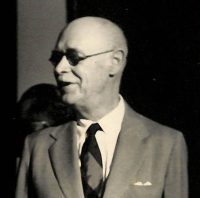Towards the middle of December 1943, Quezon moved with his family to Miami, Florida. He craved the sunshine and warmth of a climate more nearly resembling that of his own country, over which during his life in exile he constantly brooded. Reports of the state of his health were not encouraging, and the fight over his succession to the presidency had worn him out completely. He no longer had the vitality which had given him such astonishing recuperative powers in his previous illnesses. His country was still under the brutal heel of the invader.
In February, I proposed to go down to see him, but he returned a polite negative.
At the end of March I wrote him that I had to undergo a serious surgical operation, and he wired me they were all praying for a successful recovery.
As he was not doing well at Miami, he was moved to Asheville, North Carolina, a climate favorable to tuberculosis patients. Quezon was in Hathaway Cottage at the Grove Park Hotel, and as I entered, I heard low voices in conversation from his bedroom. He and his nurse were talking. Colonel Manuel Nieto and Dr. Trepp were in the sitting room, and they told me that Quezon had not been doing at all well at Asheville, and that the next morning they were going to move him back at Saranac in the Adirondack Mountains, in northern New York. I asked, of course, if I might see him, and Dr. Trepp replied that Quezon had had a relapse at Miami, and that while, of course, he could not forbid me to go in to see him, nevertheless he earnestly wished that I should not enter Quezon’s bedroom. Of course I acquiesced in his decision. I spent an hour talking with Nieto and Trepp.
Those who saw Quezon put aboard the train in a stretcher the next morning told me he was exceedingly feeble. I never saw him again until on August 3rd I looked on his dead face as his body lay in its coffin in St. Matthew’s Cathedral in Washington.
